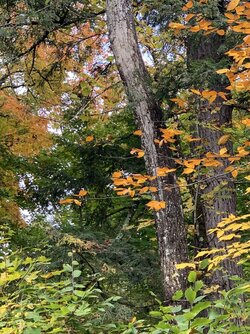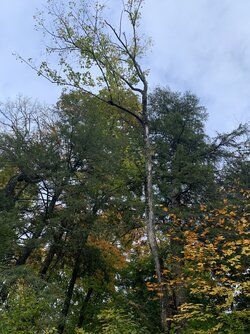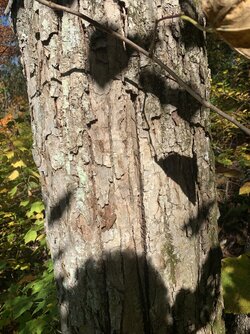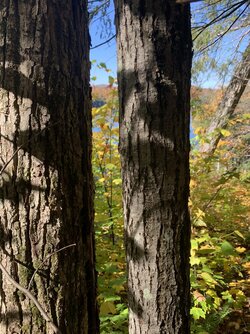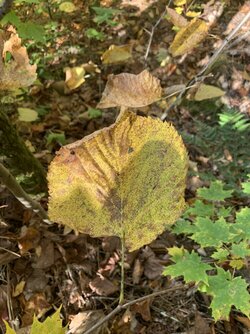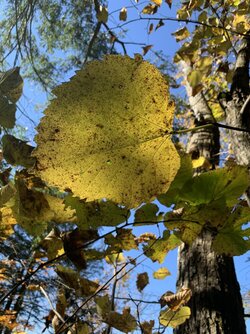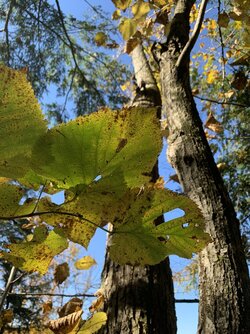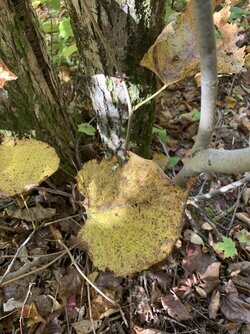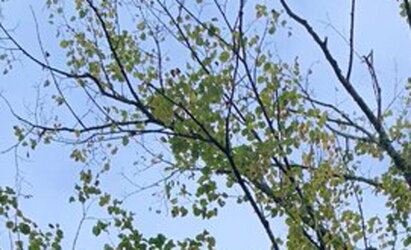I usually do not ask this…..tree id!
- Thread starter Diabel
- Start date
-
Active since 1995, Hearth.com is THE place on the internet for free information and advice about wood stoves, pellet stoves and other energy saving equipment.
We strive to provide opinions, articles, discussions and history related to Hearth Products and in a more general sense, energy issues.
We promote the EFFICIENT, RESPONSIBLE, CLEAN and SAFE use of all fuels, whether renewable or fossil.
You are using an out of date browser. It may not display this or other websites correctly.
You should upgrade or use an alternative browser.
You should upgrade or use an alternative browser.
The one to the right is hemlock. I will take a pic of a leaf next weekend when I am there. I am hoping it is ironwood.
American Hophornbeam? I've never seen one afaik, but that bark would seem to jibe with the description in the Audubon Guide.. "light brown, thin, finely fissured into long narrow scaly ridges."
armanidog
Minister of Fire
NorthernFireplaceFool
Member
Looks like Ironwood to me. They don't get very "big" in the trunk but the strength of the wood allows them to grow that tall. Looks like the one I cut down for my parents a few years ago. Same size. It will amaze you how old that tree is if that is Ironwood. Good luck splitting it. Hope you have a large ton hydro splitter.
stoveliker
Minister of Fire
My city neighbor has elms in his yard and definitely these leaves are too round for elm.Don't the leaves look like elm? Maybe a bit too round?
Grizzerbear
Minister of Fire
Yea not elm. For some reason it reminds me of poplar trees but I'm not super familiar with them. Not native around here.
armanidog
Minister of Fire
Maybe a linden tree? Linden are the European name while Basswood is the North American name. There are about 30 varieties in Tilia
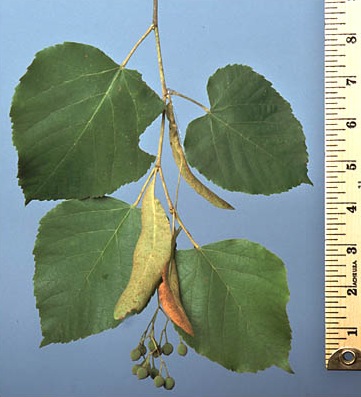
"Tilia is a genus of about 30 species of trees or bushes, native throughout most of the temperate Northern Hemisphere. The tree is known as linden for the European species, and basswood for North American species.[1][2] In Britain and Ireland they are commonly called lime trees, although they are not related to the tree that produces the citrus fruit lime. The genus occurs in Europe and eastern North America, but the greatest species diversity is found in Asia. Under the Cronquist classification system, this genus was placed in the family Tiliaceae, but genetic research summarised by the Angiosperm Phylogeny Group has resulted in the incorporation of this genus, and of most of the previous family, into the Malvaceae.
Tilia species are mostly large, deciduous trees, reaching typically 20 to 40 m (65 to 130 ft) tall, with oblique-cordate leaves 6 to 20 cm (2+1⁄4 to 7+3⁄4 in) across. As with elms, the exact number of species is uncertain, as many of the species can hybridise readily, both in the wild and in cultivation. They are hermaphroditic, having perfect flowers with both male and female parts, pollinated by insects."
Wikipedia
It has fewer than 14 BTUs (British Thermal Units), which makes it a poor-quality wood for fires in general. However, it depends on the purpose of your fire and what time of year it is."
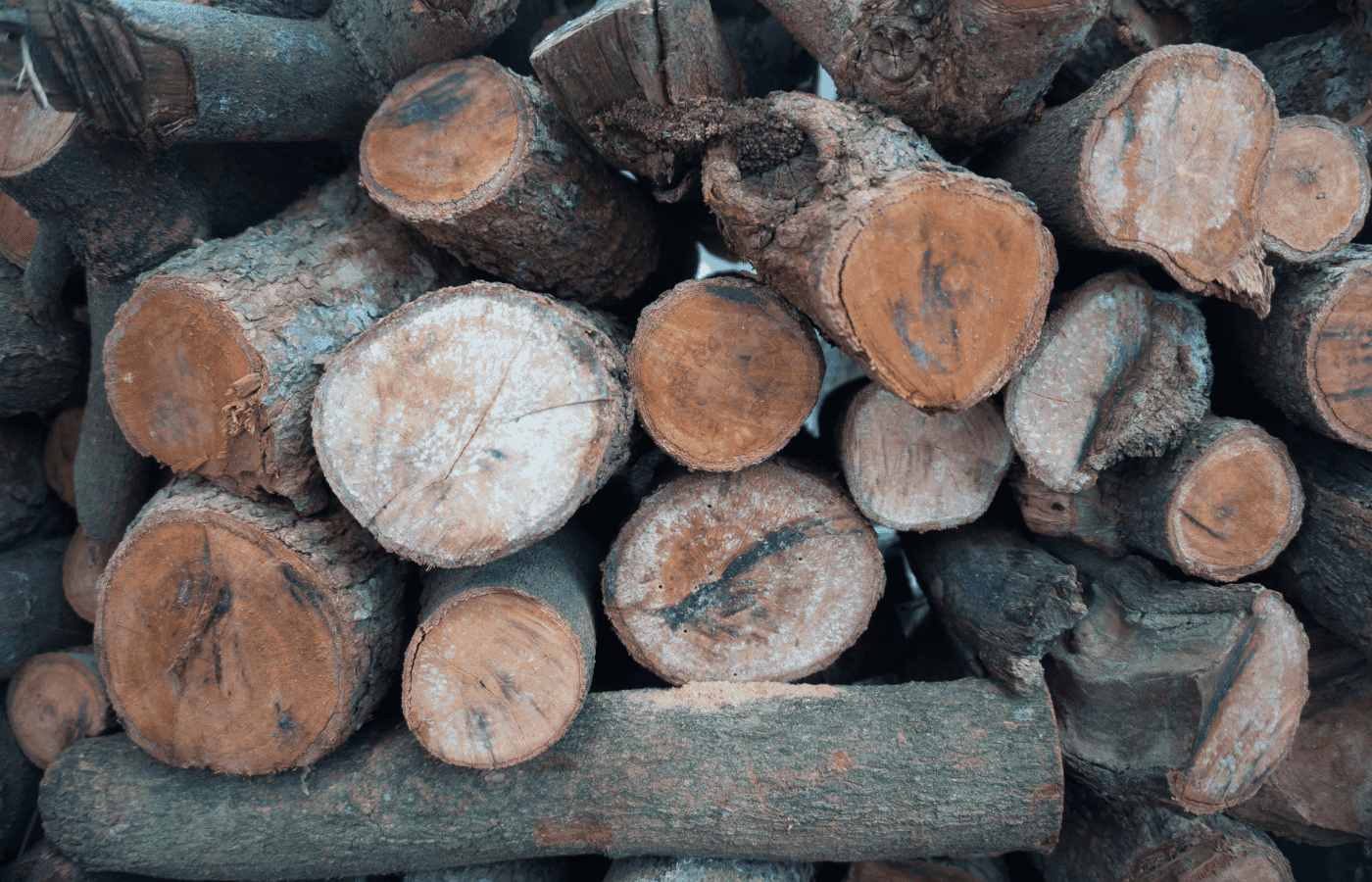
 outdoorbarren.com
outdoorbarren.com

"Tilia is a genus of about 30 species of trees or bushes, native throughout most of the temperate Northern Hemisphere. The tree is known as linden for the European species, and basswood for North American species.[1][2] In Britain and Ireland they are commonly called lime trees, although they are not related to the tree that produces the citrus fruit lime. The genus occurs in Europe and eastern North America, but the greatest species diversity is found in Asia. Under the Cronquist classification system, this genus was placed in the family Tiliaceae, but genetic research summarised by the Angiosperm Phylogeny Group has resulted in the incorporation of this genus, and of most of the previous family, into the Malvaceae.
Tilia species are mostly large, deciduous trees, reaching typically 20 to 40 m (65 to 130 ft) tall, with oblique-cordate leaves 6 to 20 cm (2+1⁄4 to 7+3⁄4 in) across. As with elms, the exact number of species is uncertain, as many of the species can hybridise readily, both in the wild and in cultivation. They are hermaphroditic, having perfect flowers with both male and female parts, pollinated by insects."
Wikipedia
"Heat Output
Linden Trees do not burn very hot or provide long-lasting coals once the fire dies down. But, the wood does light with great ease when dried right and burns very fast. So if your purpose is for warmth or cooking, choose another kind of wood.It has fewer than 14 BTUs (British Thermal Units), which makes it a poor-quality wood for fires in general. However, it depends on the purpose of your fire and what time of year it is."

Is a Linden Tree Good For Firewood?
You can burn it if there’s nothing else available, but it doesn’t produce very much heat at all and it burns quite fast. It’ll work in a pinch but if there are other woods around, it’s advisable to use those instead.
I have lots of basswood here. Bark looks different especially on younger trees. Hope it is not basswood, they are like weed here! Sampling everywhere with their massive leaves cover most of the ground.
Caw
Minister of Fire
It's definitely not poplar. I have 2 giant females in my yard and the bark is completely different. Also the leaves are more of a heart shape.
armanidog
Minister of Fire
The only other trees with a leaf like that would be eastern cottonwood or mulberry. Eastern cottonwood has very furrowed bark and mulberry has a smooth reddish bark.I have lots of basswood here. Bark looks different especially on younger trees. Hope it is not basswood, they are like weed here! Sampling everywhere with their massive leaves cover most of the ground.
It could be an old basswood tree if the taller trees were shading it.
kennyp2339
Minister of Fire
therealdbeau
Burning Hunk
stoveliker
Minister of Fire
With Basswood you should be able to find the seeds under the tree: often a leaf(ish piece) with two (pea size) "cherries" each on a little stem hanging under that leaf.
CincyBurner
Minister of Fire
basswood - leaves and the buds (fat & rounded) are clincher.
http://dendro.cnre.vt.edu/dendrology/syllabus/factsheet.cfm?ID=88
http://dendro.cnre.vt.edu/dendrology/syllabus/factsheet.cfm?ID=88
Caw
Minister of Fire
stoveliker
Minister of Fire
Similar threads
- Replies
- 4
- Views
- 1K
- Replies
- 4
- Views
- 1K
- Replies
- 34
- Views
- 4K


